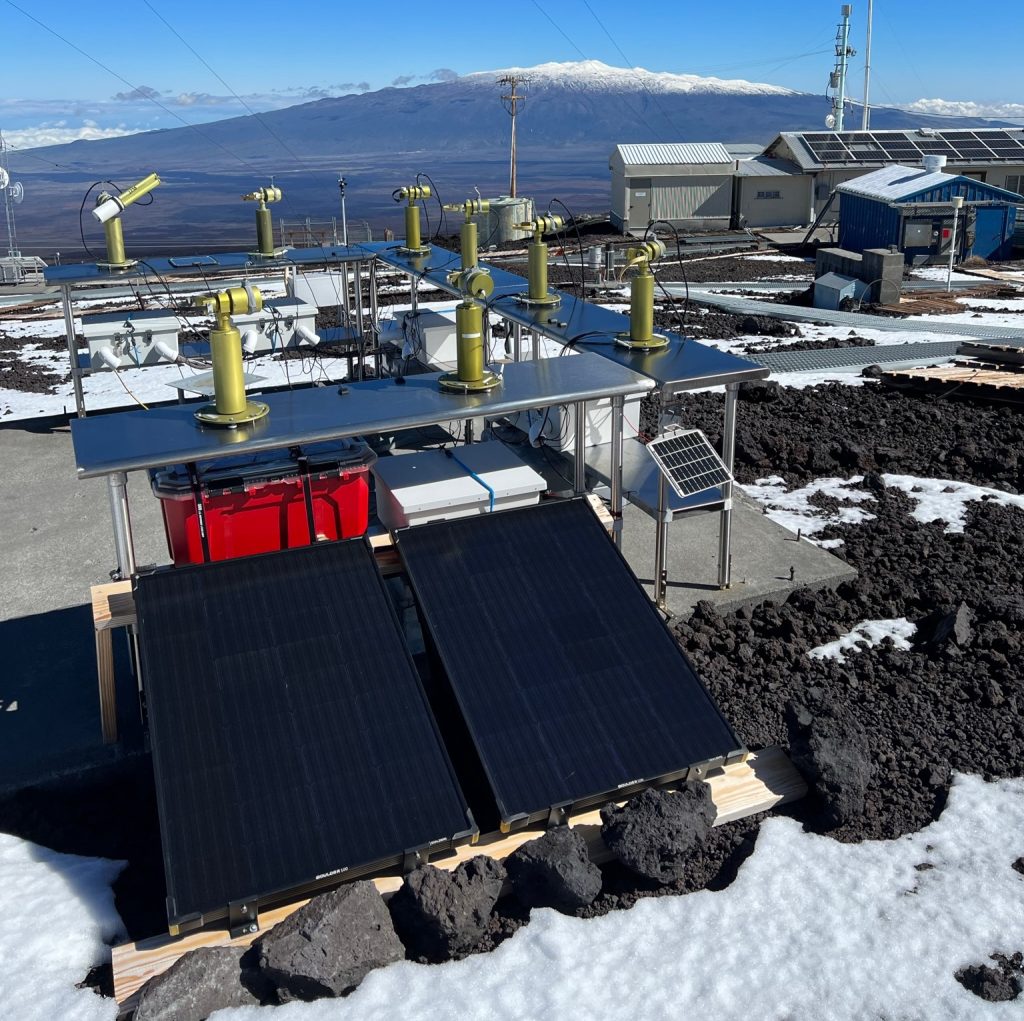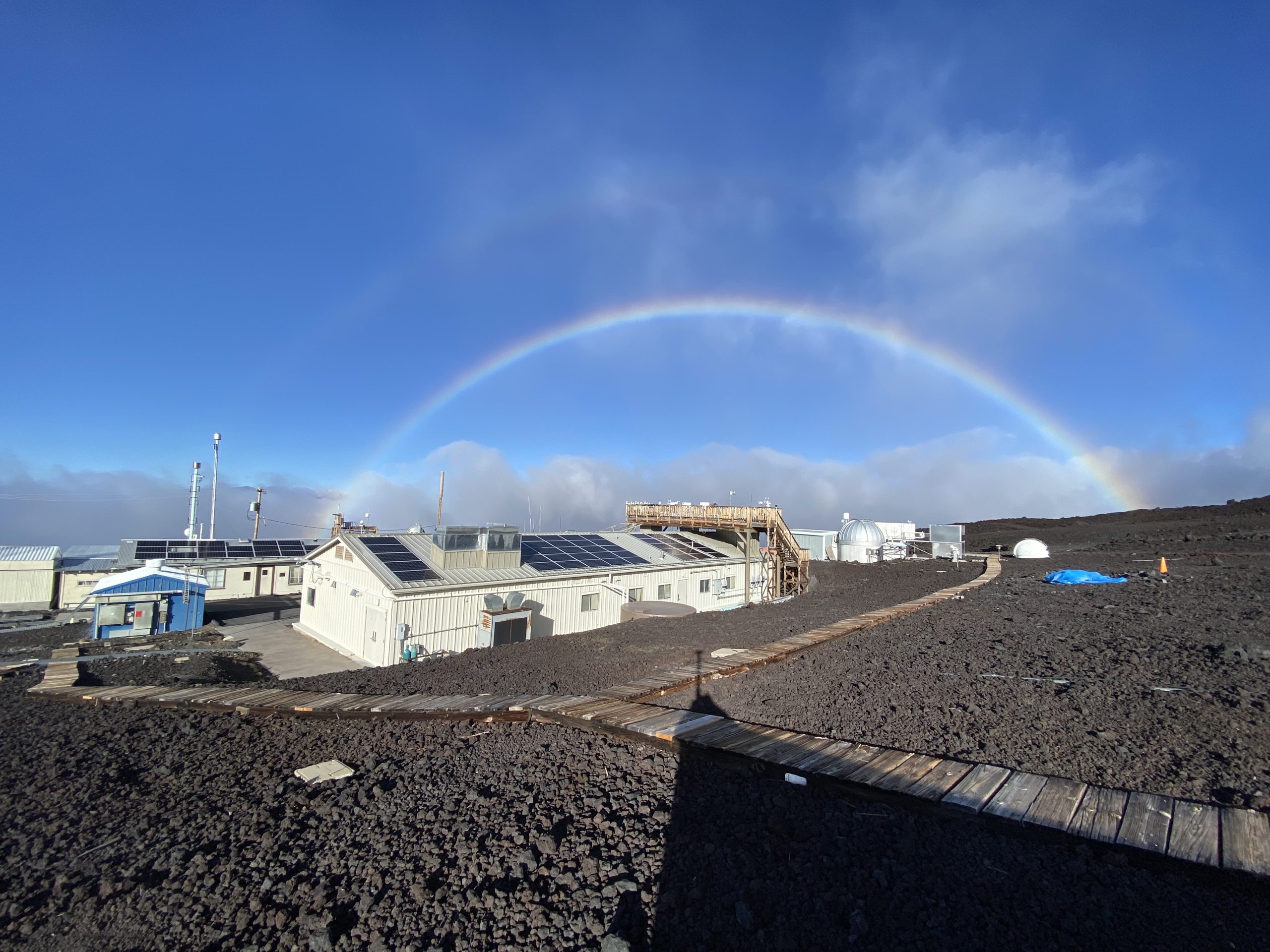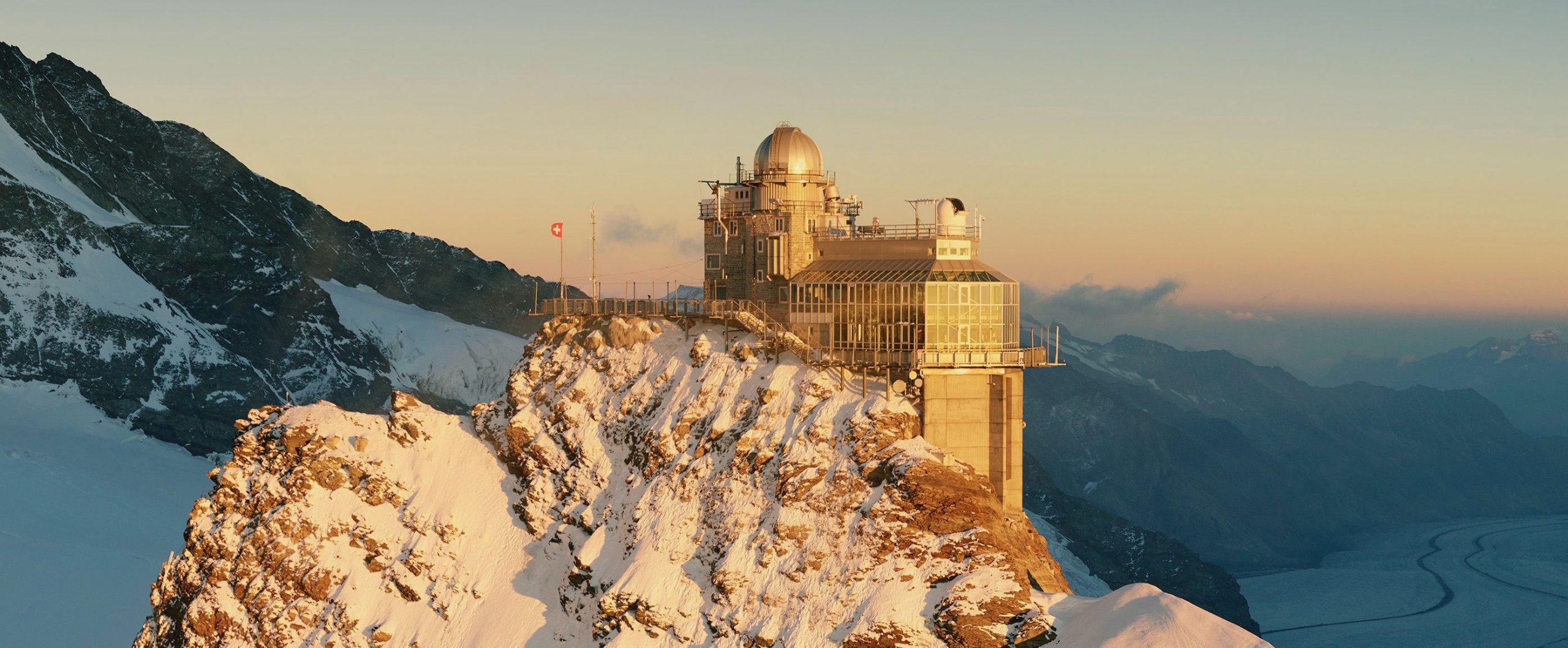The eruption of Mauna Loa volcano on Hawaii’s Big Island on Nov. 27, 2022 temporarily interrupted important scientific observations at the Global Monitoring Laboratory’s atmospheric baseline observatory located on its upper slope. Among them were long-running measurements of carbon dioxide (CO2) that provide a global benchmark for monitoring climate change.
After lava flows buried about a mile of the access road in deposits up to 30 feet deep and destroyed 60 power poles bringing electricity to the site, NOAA staff scrambled to stand up a temporary measurement site at a University of Hawai’i astronomical observatory located on nearby Mauna Kea to continue the critical CO2 monitoring and other atmospheric measurements taken at the observatory.
Over the past year, MLO staff visiting the site once a week via helicopter have restored limited power to four key observatory buildings by augmenting existing solar generation and adding battery systems. Approximately 33 percent of the atmospheric measurements on the mountain site have now been restored, including consistent measurements for all of the Global Monitoring Laboratory’s primary research groups: Greenhouse gases, Halocarbons and Trace gases, Ozone, Global radiation and Aerosols.
“Thanks to a swift action by our laboratory staff and support from the University of Hawai’i, the interruption in the key long-term records was only 10 days,” said Global Monitoring Laboratory Director Vanda Grubišić, who visited the observatory in October with Christine Smith, the acting Observatories and Global Network Operations Division lead. “Restoring a third of the measurements with no line power or road access is a major accomplishment.”
In March, staff returned power to the Keeling building containing Scripps Institute of Oceanography’s CO2 sampling instrument, which makes complementary independent measurements to NOAA’s. Since then, limited power has been restored to the Network for the Detection of Atmospheric Composition Change Building, and two other NOAA buildings on the 8-acre campus.
Prior to the eruption, about 250 climatological measurements were made every day. NOAA has been working diligently with partner institutions to help them repower their research projects with independent solar and battery systems designed to meet their respective needs.

In the long run, NOAA intends to take the facility off the grid, powering it entirely with solar generation as part of a site-wide renovation plan. Without road access though, major activities are on hold. NOAA signed an Interagency Agreement with DOT Federal Highway Administration for construction of a temporary access road to the observatory on July 31.
Smith said while staff continues to work on restoring operations, supporting NOAA’s partners and other users of the site, “our focus now is on that temporary access road that will allow us to move forward with all the other activities, including the site renovation.”
For more information, contact Theo Stein, NOAA Communications, at theo.stein@noaa.gov.



